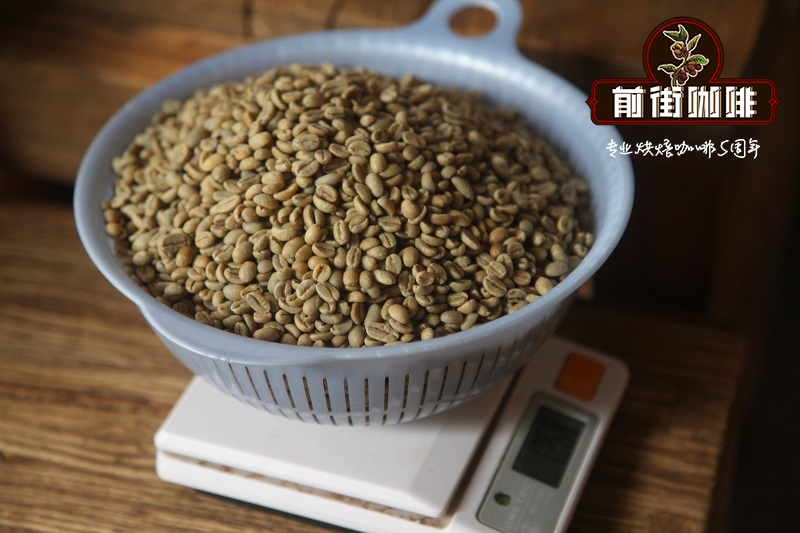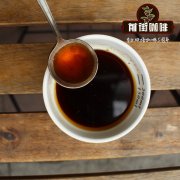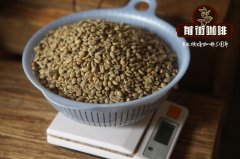Unique Guatemalan coffee Guatemala Platanillo Manor Elephant beans how to do hand flushing? Yes

Professional coffee knowledge exchange more coffee bean information please follow the coffee workshop (Wechat official account cafe_style)
Unique Guatemalan coffee Guatemala Platanillo Manor Elephant beans how to do hand flushing? What kind of coffee do you have?
Coffee has contributed to Guatemala's economic situation in the past century. It is estimated that there are about 120000 coffee producers there, accounting for 40% of Guatemala's export agricultural income. Coffee is very common in Guatemala. Coffee beans are grown in almost all regions of the country. As many as 20 of the 22 provinces are engaged in coffee cultivation and 98% shade. These are almost exclusive to Arabica beans, and most of them are washed. The main varieties are Bourbon, Maragogype, Tipica, Caturra, Catua í, Pache and Pacamara, Guatemala's high altitude and 300 different microclimates Coupled with stable rainfall and fertile soil rich in minerals, coffee cultivation is ideal in Central American countries. Since the early 1990s, Anacaf é has taken the lead in serving the country according to the characteristics of coffee, growth climate, soil quality and altitude. Eight different producing areas for the production of alpine hard beans (SHB) are divided: Ekat Nango Valley (the Acatenango valley), Antigua (Antigua), Attila (Atitl á n), Coban Rain Forest (Coban á n), Farrakhan Nice Plain (the Fraijanes plateau), Vicki Nango (Huehuetenango), New Oriental (Nuevo Oriente) and San Marcos volcanic area (San Marcos). The main harvest season is from December of each year to March of the following year. In higher altitude producing areas such as Huehuetenango, the harvest time may be longer until April. As long as the new crop is harvested at the initial stage, it will be shipped after it is processed, usually during the period from April to July.
El Platanillo Manor is located on the slopes of the Tacana and Tajumulco volcanoes, ranging from 1060 to 1460 meters above sea level. Samuel Coto Escobar bought the farm in 1976 and is now run by his children. El Platanillo Manor is single and specializes in growing coffee beans that produce the Maragogype Malaggippe variety, commonly known as the elephant bean, which is one of the so-called heirloom varieties, planted for its unique flavor. In contrast, a Malaggippe coffee tree may produce less than a kilogram of raw beans a year, while the newer high-yield hybrids in recent years have casually produced as much as three times as much. Marago Gippe from El Platanillo Manor in Guatemala has excellent and stable coffee beans every season, which gives you an opportunity to explore and develop a new favorite coffee.
Property Characteristics: farm characteristics
Farm Farm name: Finca El Platanillo
Farmer Farm owner: Stuardo Coto Markus
City city: San Rafa ë l Pi é de la Cuesta
Region producing area: San Marcos San Marco
Country country: Guatemala
Farm Size Farm size: 368 Hectares ha
Coffee growing area Coffee planting area: 321 Hectares ha
Altitude altitude: 1060 Murray 1460 meters
Coffee Characteristics: coffee characteristics
Variety variety: Maragogype Malago Gippi (elephant bean)
A variety of Typica species, a commemorative name found in places in Maragogype, Brazil, coffee beans are called elephant beans because of their order of more than 19 orders. The taste is mild with slightly sour and sweet, it is not easy to produce and the yield is very low.
Processing System treatment: Fully Washed washing method
Appearance appearance: more than .20 mesh
Top Jury Descriptions judge's comment: the baking degree measured by the cup for 60 seconds at the beginning of the first explosion (Cinnamon)
Aroma / flavor flavors: almonds, peanuts, nuts, cocoa, raspberries, blackcurrants, oolong tea, litchi, floral perfumes
Sour: unique, fresh, subtle, clean, mint, orangic acid, red gluconic acid, malic acid
Complex complexity and other other: full of fragrant, soft taste, Huigan oolong tea heavy end of the delicate, with red grape fermented wine
In 2011, Direct Coffee introduced a single variety of Maragogype Malago Gippi (like beans) from Finca El Platanillo Manor, which is an interesting coffee bean with a complete large bean shape and a very delicate and clean flavor contrary to the bean body. I especially like the oolong tea aroma and fine fruit acidity emitted from shallow roasting and brewing. After entering the second explosion (Full City), most of the tea feeling and fruit acid disappeared and converted into the aroma of nut almond chocolate.
Qianjie cuisine is recommended:
V60 filter cup, 15g powder, water temperature 90 degrees, grinding 3, water powder ratio close to 1:15
Steaming in 30 grams of water for 30 seconds
Section: inject water until 110ml is cut off, wait for the water level to drop to 1pm 3 and then slowly inject water until 225ml stops.
That is, 30-120-225g
Other suggestions for trickling extraction:
Normal pressure, recommended grinding degree of 3.5-4 / water temperature 90 °C
Philharmonic pressure, recommended 2.5 grinding degree, water temperature 90 °C
Hand punch: 3.5 degree of grinding, water temperature 91 °C
3.5 Grinding-90 degrees water temperature
Important Notice :
前街咖啡 FrontStreet Coffee has moved to new addredd:
FrontStreet Coffee Address: 315,Donghua East Road,GuangZhou
Tel:020 38364473
- Prev

The story of Guatemalan coffee cultivation the flavor of orange honey treatment at St. Felicia Manor in Akatilan?
Professional coffee knowledge exchange more coffee bean information please follow the coffee workshop (Wechat official account cafe_style) the story of Guatemalan coffee cultivation the flavor of orange honey treatment at Acatilan San Felicia Manor? How can it be cooked to taste good? Finca Santa Felisa, a famous organic coffee garden in Guatemala, is founded by Trinidad E. Cr.
- Next

Is the coffee bean of Arabica variety in Chiapas plateau of Mexico good to drink? What's the flavor and taste?
Professional coffee knowledge exchange more coffee bean information please follow the coffee workshop (Wechat official account cafe_style) Mexico Chiapas Plateau Arabica varieties of coffee beans good hand brewing? What are the flavor and taste characteristics? Mexico is one of the largest producers of organic certified coffee, mostly sold to the United States because of geographical factors. The country's coffee industry began in the 19th century.
Related
- Detailed explanation of Jadeite planting Land in Panamanian Jadeite Manor introduction to the grading system of Jadeite competitive bidding, Red bid, Green bid and Rose Summer
- Story of Coffee planting in Brenka region of Costa Rica Stonehenge Manor anaerobic heavy honey treatment of flavor mouth
- What's on the barrel of Blue Mountain Coffee beans?
- Can American coffee also pull flowers? How to use hot American style to pull out a good-looking pattern?
- Can you make a cold extract with coffee beans? What is the right proportion for cold-extracted coffee formula?
- Indonesian PWN Gold Mandrine Coffee Origin Features Flavor How to Chong? Mandolin coffee is American.
- A brief introduction to the flavor characteristics of Brazilian yellow bourbon coffee beans
- What is the effect of different water quality on the flavor of cold-extracted coffee? What kind of water is best for brewing coffee?
- Why do you think of Rose Summer whenever you mention Panamanian coffee?
- Introduction to the characteristics of authentic blue mountain coffee bean producing areas? What is the CIB Coffee Authority in Jamaica?

